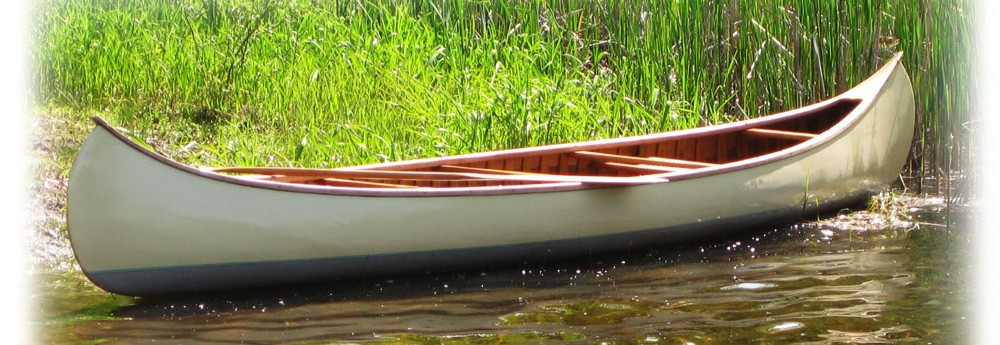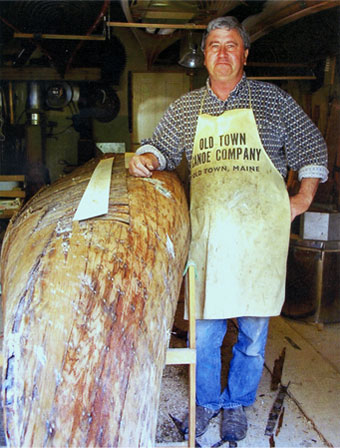Wooden Canoes: Beauty, Function, Integrity
Wooden canoes are generally beautiful creations. The graceful lines, the warm glow of the wood – but it’s not just the visual sense. It’s the quiet ripple of water as the canoe slips through the water almost effortlessly on a glass lake at sunset or a morning mist.
Wooden canoes are functional as transportation or as tools for recreation, enjoying nature. They are lightweight, strong, stable and will keep you dry in the middle of a lake.
Wooden canoes have integrity. They are generally made of local natural materials and can be fashioned with simple tools. Eastern white cedar is used for ribs and planking because it is lightweight and weather resistant. Spruce is used for inner gunwales because it is very strong for its light weight. Ash or oak is used for outer gunwales because it is strong and can take abuse. Oak is usually used for seats, thwarts and decks and for ribs on all-wood canoes.
We lived on a lake when I was a kid and my father would occasionally bring home a wooden boat. He left it up to me to scrape, paint and soak to swell them up. He liked to fish and made me bail out the rainwater and dig the worms. It’s a wonder I would even look at a wooden boat today.
One day he brought home a wooden canoe when I was in my early teens. Of course, he was too busy to help me fix it up, but my mother pitched in. She ordered canvas from Sears & Roebuck, I think, and somehow we got it to float. I had many wonderful times in that canoe.
I went away to college, got married, had a kid of my own, moved off to Vermont and forgot about the canoe. My father died in ’74 and sometime afterward I went back to Michigan to pick up some of his tools and inherited stuff. Out in the woods behind the house I found the weathered, neglected hull of that canoe, too far gone to save. However there was another hull my Dad had apparently dragged home in pretty good shape. I stuffed it in the U-Haul and so began my serious second affair with canoes. I get great satisfaction out of uncovering the history, understanding the builder’s design and craftsmanship and, of course, paddling them once they are restored.
I like to think I am a faithful steward (to quote an Audubon friend’s epitaph) to their survival.

